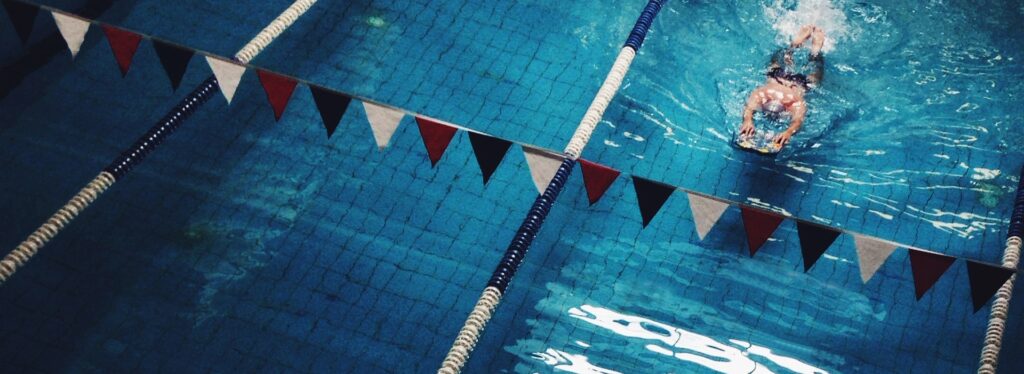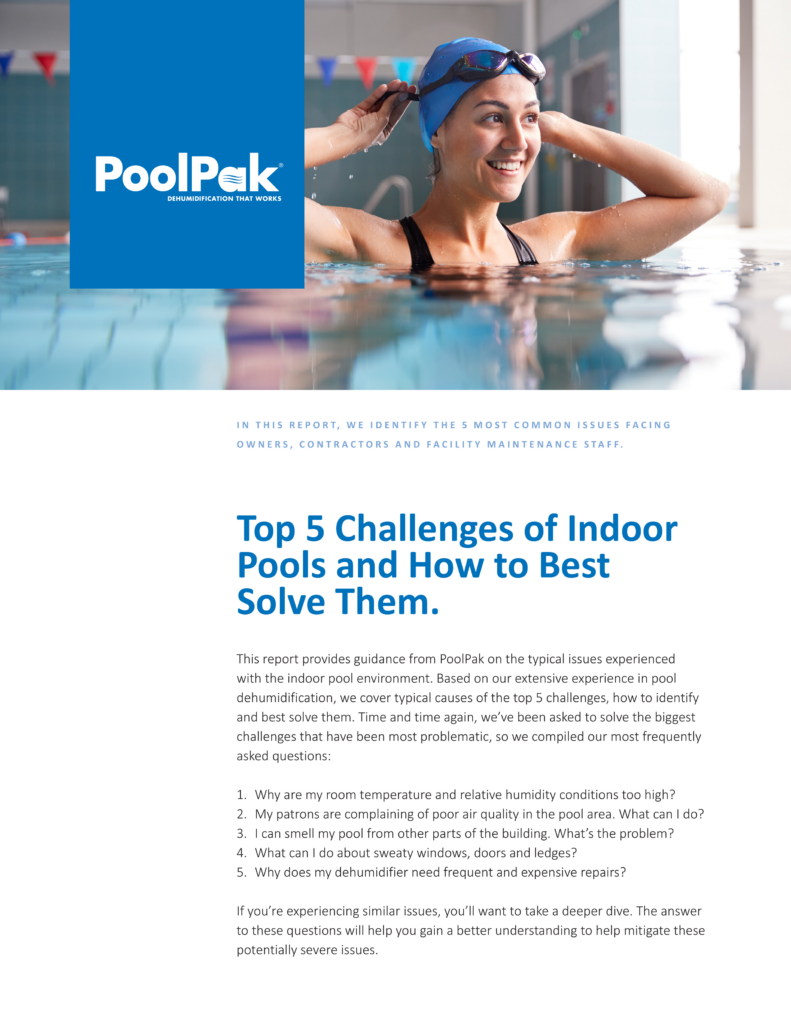
Time and time again, we’ve been asked to solve the biggest challenges with the indoor pool environment. Based on our extensive experience in pool dehumidification, we’ve identified the top five challenges of indoor pools, their typical causes, and how to best solve them.
Here’s challenge number four…
The Pool Room Windows, Doors and Ledges Are Sweaty
Whether big or small, all indoor pools must have robust measures to control humidity and prevent condensation.
Obviously, an indoor pool has the potential to produce an enormous amount of moist air. But that’s not the only reason condensation is a unique concern in pools. Their air temperature is also much higher than a regular room, meaning their dew point is also quite a bit higher than usual. Combined, these factors mean condensation can easily occur in a pool while it wouldn’t normally be an issue in another room.

Dew Point
The dew point is the temperature at which moisture in the air condenses when it comes into contact with a surface that’s colder by 1°F or more.
You only have to enjoy a cold drink on a summer day to experience dew point and condensation firsthand. When you pour a cold beverage into a glass, condensation will begin to form on the outside of the glass almost immediately. This is because the surface temperature on your glass is below the ambient dew point temperature.
This happens at indoor pools across North America every year when outdoor temperatures fall during the winter. Exterior-facing surfaces that have low insulation values, like windows, skylights and fire doors, are very likely to have a surface temperature that is below the room dew point during cold weather. As a result, moisture condenses on them.
The Dangers of Condensation
There are two major concerns when it comes to condensation in the pool environment:
- It can seriously damage the structure.
- In doing so, the patron experience will be negatively affected; sweaty windows are unsightly, and visible mold or corrosion could drive patrons away.
Condensation triggers a destruction process, since it allows mold and mildew to grow on the materials from which a building is constructed. It also frequently forms corrosion on metal surfaces.
In an indoor pool, air will almost always have some degree of corrosiveness due to chemicals that off-gas from the water.
Other than condensation that you can see on surfaces, there is a hidden danger. If allowed to permeate the building walls or roof, condensation will not only instigate mold-induced deterioration, it will also cause additional devastation of the structure in winter. This is because when temperatures drop below the freezing point, the moisture that’s soaked into the structural components of the building turns into ice and expands, putting additional stress on the materials and causing fissures and cracks that compromise the integrity and safety of the structure. That is why it’s critical all indoor pool rooms have a properly constructed envelope with a vapor barrier.
Preventing Condensation
The pool room dehumidification system is an essential part of condensation control and prevention. It must maintain the interior conditions (temperature and RH) at the correct, desired setpoints as determined when the indoor pool was constructed. The air ducts must distribute air all around the pool room, taking special care to direct warm airflow against surfaces that are likely to drop below the dew point of the room.
It’s important to ensure the entire surface is covered by warm airflow. Mother nature will tell you on the first cold day how good a job you’ve done — it’s common to find the top of a window condensation-free because it’s near a diffuser, but the bottom is sweaty because the diffuser does not have enough “throw” distance to work the air all the way down.
If your indoor pool room struggles with this, then it is a smart idea to have an expert come in and review your dehumidification system. They will have the experience and the knowledge to identify areas that can be improved to better control condensation. In many cases adjustments can be made for little cost. For example, one facility was recommended to rotate their ductwork to improve supply air diffusion.

